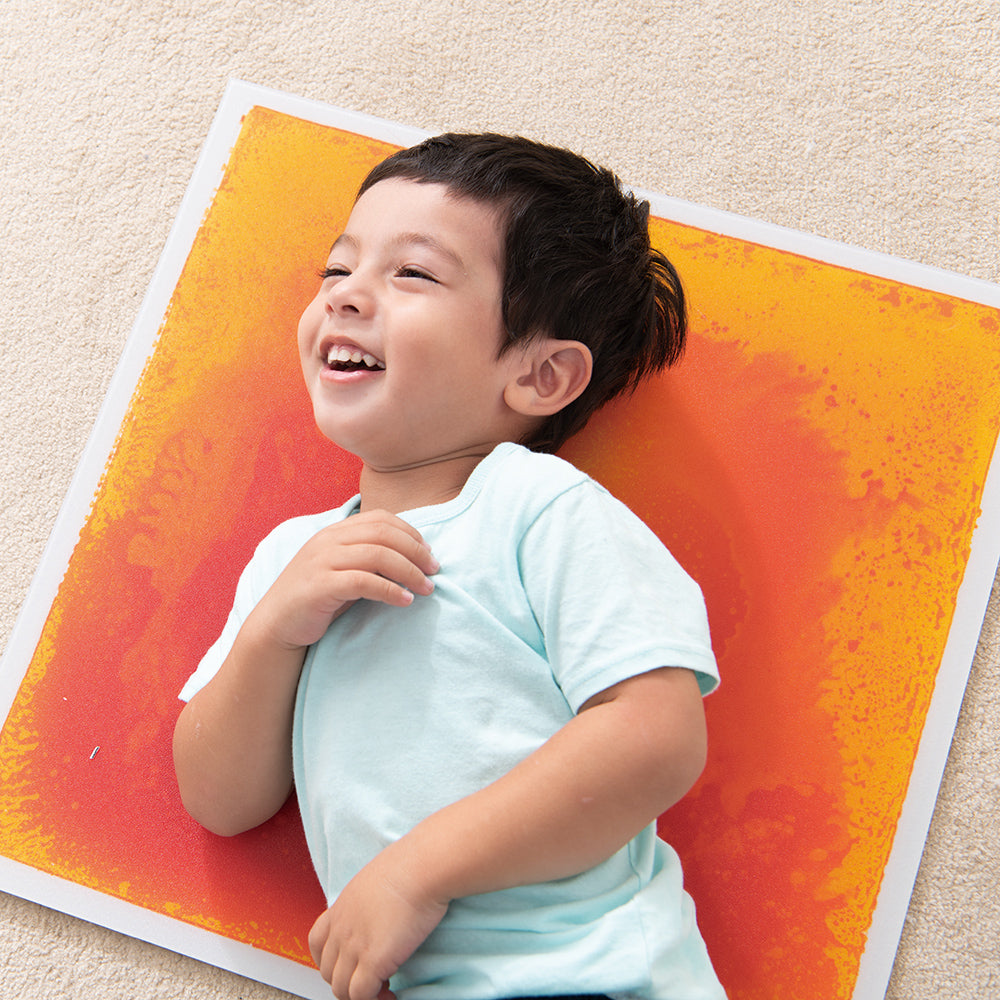Mar 31 , 2023
Benefits Of Sensory Play On Children's Brain Development
Playing with their senses will help your kid get ready for life. Let's go over the advantages of sensory exercise and how it affects brain growth.
For a number of reasons, sensory toys can help children's brains grow. First, since many sensory toys require small muscles in the hands and fingers to operate them, they can aid in the development of fine motor skills. Second, by giving kids sensory experiences that can teach them about their surroundings, they can support cognitive growth. For instance, a child could build, scoop, or make noises with a toy to learn about cause and effect, or they could use a toy with varying textures to learn about various textures and how they feel. As a safe and controlled environment for children to explore and process sensory data, sensory toys can also be a wonderful way to support those with sensory processing disorders.
What Is Sensory Play
Toys that interact with the various ways our five senses—taste, smell, sight, touch, and sound—allow us to experience the world are what we mean when we talk about sensory toys. Due to their accessibility, touch, sight, and sound are the three senses that are typically emphasized in sensory plays. Children's growth can benefit from sensory toys because they give kids the chance to explore and interact with their senses, which can enhance their fine and gross motor skills, cognitive abilities, and general development. Sensory devices can also aid in brain stimulation and promote critical and problem-solving thinking. Sensory integration, or the capacity to process and interpret sensory data from the surroundings, can also be encouraged by sensory toys. The ability to better comprehend and navigate their environment can help kids develop better social skills and emotional control.
The Benefits Of Sensory Play For Brain Development
Sensory play is important for brain development because it helps children to explore and engage with their environment in a way that stimulates their senses. This type of play allows children to learn about the world around them, and it helps to develop their cognitive, language, and motor skills. Sensory play also helps to develop children’s social and emotional skills, as they learn to interact with others and regulate their emotions. Additionally, sensory play can help to promote creativity and problem-solving skills, as children learn to manipulate objects and materials in different ways. Overall, sensory play is a crucial part of early childhood development, and it can have a lasting impact on children’s learning and development. Early postnatal years are found to contain the majority of critical times, which is why sensory play is crucial for young children 1.
Infants and toddlers, who frequently have free time to play and explore at home, but also preschoolers and primary school students, benefit from sensory play. Your child will learn more from the experience and retain more knowledge if they are permitted to use multiple senses to complete a task. A sensory kit can be useful, for instance, if a kid is learning their letters or the alphabet. With a sensory kit, the child can make letters and numbers with various toys to engage different senses and aid in memory retention. They can also practice writing and counting in the rice.
Playing, whether sensory-centered or not, is good for child development, so sensory activities are essential for other aspects of brain growth in addition to sensory development. Young children develop their creativity just by having fun. Additionally, they develop their social, emotional, linguistic, cognitive, visual-spatial, and other abilities 2-6.
Ideas For Sensory Play And Activities
Children can engage in a variety of sensory and play pursuits, including:
- playing with play dough or kinetic sand, as well as other tactile objects, such as sand or water. These things can be purchased individually or come pre-assembled in sensory play sets.
- exploring various tastes, scents, and textures, such as with a sensory bin that is "taste safe" and contains food.
- using a torch or lightbox to experiment with light and shadows.
- moving to the rhythm of music while listening to it.
- playing with bubbles or other interestingly moving objects, like marbles or automobiles.
- hiding things and looking for them, as in a treasure quest or a hide-and-seek game.
Making Inquiries and Conversations While Engaging in Sensory Play
Asking inquiries while they play will pique your kids' interest and promote conversation using illustrative language.
During sense play, some inquiries that can be made include:
- What strikes you about the way this substance feels?
- Can you characterize this object's color, shape, or texture?
- What scent does this have?
- What noise does this make when you move or jiggle it?
- Can you locate something that matches this object's hue, shape, or size?
- What would occur if you combined these two substances?
- Can you construct something with these building pieces or other materials?
These inquiries can aid in encouraging kids to reflect more thoroughly on their sensory experiences and draw connections between various materials and objects. As kids learn to articulate their thoughts and make observations about their surroundings, asking questions during sensory play can also support the language and cognitive development of young children.

